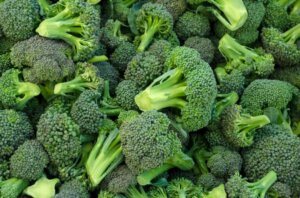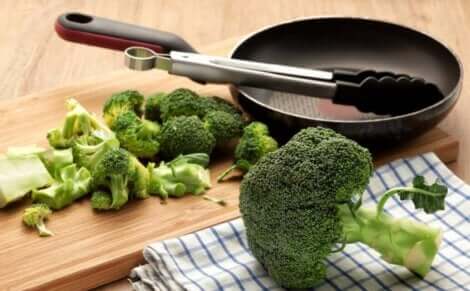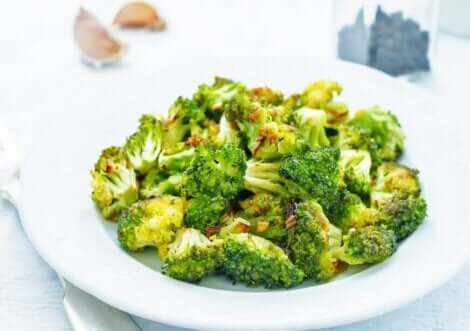The Best Ways To Cook and Eat Broccoli


Reviewed and approved by the pedagogue in physical education and nutritionist Elisa Morales Lupayante
Do you usually eat broccoli at least once a week? If your answer is no, now might be the time to change that. Not only is broccoli a versatile and tasty vegetable, but it’s also a great source of essential nutrients that help to promote health and well-being.
According to a study published in Mini-Reviews in Medicinal Chemistry, broccoli is a source of vitamins E, C, and K, as well as minerals such as iron, zinc, and selenium. It also contains polyphenols and other substances with antioxidant properties that are good for your health.
However, most people are unaware of the best ways to cook and eat broccoli. That’s why in this article we’ll give you a few tips and tricks so that you can start eating broccoli the right way, and take full advantage of all its nutrients. Start taking notes!
Which parts of the broccoli plant should I eat?
People that include broccoli in their diets often only eat the florets, throwing the leaves and stems in the trash. However, what most people don’t know is that these parts of the plant contain high concentrations of nutrients.
For example, broccoli stems are high in fiber, with about 3-4 grams in each stem. In addition, the leaves contain higher amounts of beta carotene than the stems or florets.
How can you incorporate broccoli stems into your diet?
The flavor of the stems is slightly sweet and really delicious. You can cook them by removing the skin and cutting them into chunks. Make sure that you start cooking them before the florets, as they will take longer to cook.

How can I include the leaves in my diet?
We often forget about the leaves, not realizing that they also contain a variety of different nutrients. The leaves contain high quantities of beta carotene, which is an important antioxidant that can reduce the risk of different illnesses such as macular degeneration.
They’re also a source of vitamin A, which is important for strengthening the immune system and protecting vision, according to a study published in Progress in Food and Nutrition Science.
A single 1-ounce serving can provide 44% of the daily recommended amount of vitamin C.
Broccoli leaves can be prepared and eaten the same way as the florets, although the best way to eat them is roasted, sauteed or steamed.
What’s the best way to cook and eat broccoli?
Many people may not realize that how you prepare your food plays an important role in preserving nutrients. In the case of broccoli, it’s important to know how to steam it properly.
Steaming broccoli is a great way to preserve all the nutrients, allowing us to make the most of all the health benefits it has to offer. In fact, a study conducted in 2008 and published in Agriculture and Chemistry Journal found that steaming vegetables is the best way to prepare them.
How do I prepare it?
- You can steam broccoli on its own or with other vegetables. It’s best to use a pot that was specifically designed for steaming. Let the broccoli steam for approximately 15 minutes.
What goes well with broccoli?
One of the advantages of broccoli is that it’s a really versatile food that goes well with other foods and flavors. It works really well with foods that are rich in B vitamins, such tomatoes and spinach. It can also be eaten plain with a little olive oil and lemon juice.
How do I make a healthy broccoli salad?
This vegetable can serve as the main ingredient in healthy salads as a part of a balanced diet. Try this simple recipe that includes tomatoes, green peppers, onions, and a simple salad dressing. Delicious!

- 2 lbs. broccoli
- 2 tomatoes
- 1 green pepper
- ½ onion
- 5 ounces cooked shrimp
- Olive oil
- A little pepper
- And, finally, a pinch of salt
Directions
- First, wash and separate the broccoli florets. Then cook them in salted water and, when ready, drain, place in a bowl, and set to one side.
- Next, dice the tomatoes, slice the pepper and chop the onion into thin strips. Finally, mix everything with the shrimp and then add to the bowl with the broccoli.
- Serve cold.
Using every part of the broccoli
The most important takeaway is that all parts of broccoli are full of nutrients and can be eaten. Choose cooking methods like steaming that preserve their nutritional benefits. Finally, don’t forget to eat broccoli on a regular basis.
All cited sources were thoroughly reviewed by our team to ensure their quality, reliability, currency, and validity. The bibliography of this article was considered reliable and of academic or scientific accuracy.
- Vasanthi, H., Mukherjee, S., & Das, D. (2009). Potential Health Benefits of Broccoli- A Chemico-Biological Overview. Mini-Reviews in Medicinal Chemistry, 9(6), 749–759. https://doi.org/10.2174/138955709788452685
- Renaud EN, Lammerts van Bueren ET, Myers JR, et al. Variation in broccoli cultivar phytochemical content under organic and conventional management systems: implications in breeding for nutrition. PLoS One. 2014;9(7):e95683. Published 2014 Jul 16. doi:10.1371/journal.pone.0095683
- Liu M, Zhang L, Ser SL, Cumming JR, Ku KM. Comparative Phytonutrient Analysis of Broccoli By-Products: The Potentials for Broccoli By-Product Utilization. Molecules. 2018;23(4):900. Published 2018 Apr 13. doi:10.3390/molecules23040900
- Miglio, C., Chiavaro, E., Visconti, A., Fogliano, V., & Pellegrini, N. (2008). Effects of different cooking methods on nutritional and physicochemical characteristics of selected vegetables. Journal of Agricultural and Food Chemistry, 56(1), 139–147. https://doi.org/10.1021/jf072304b
This text is provided for informational purposes only and does not replace consultation with a professional. If in doubt, consult your specialist.








